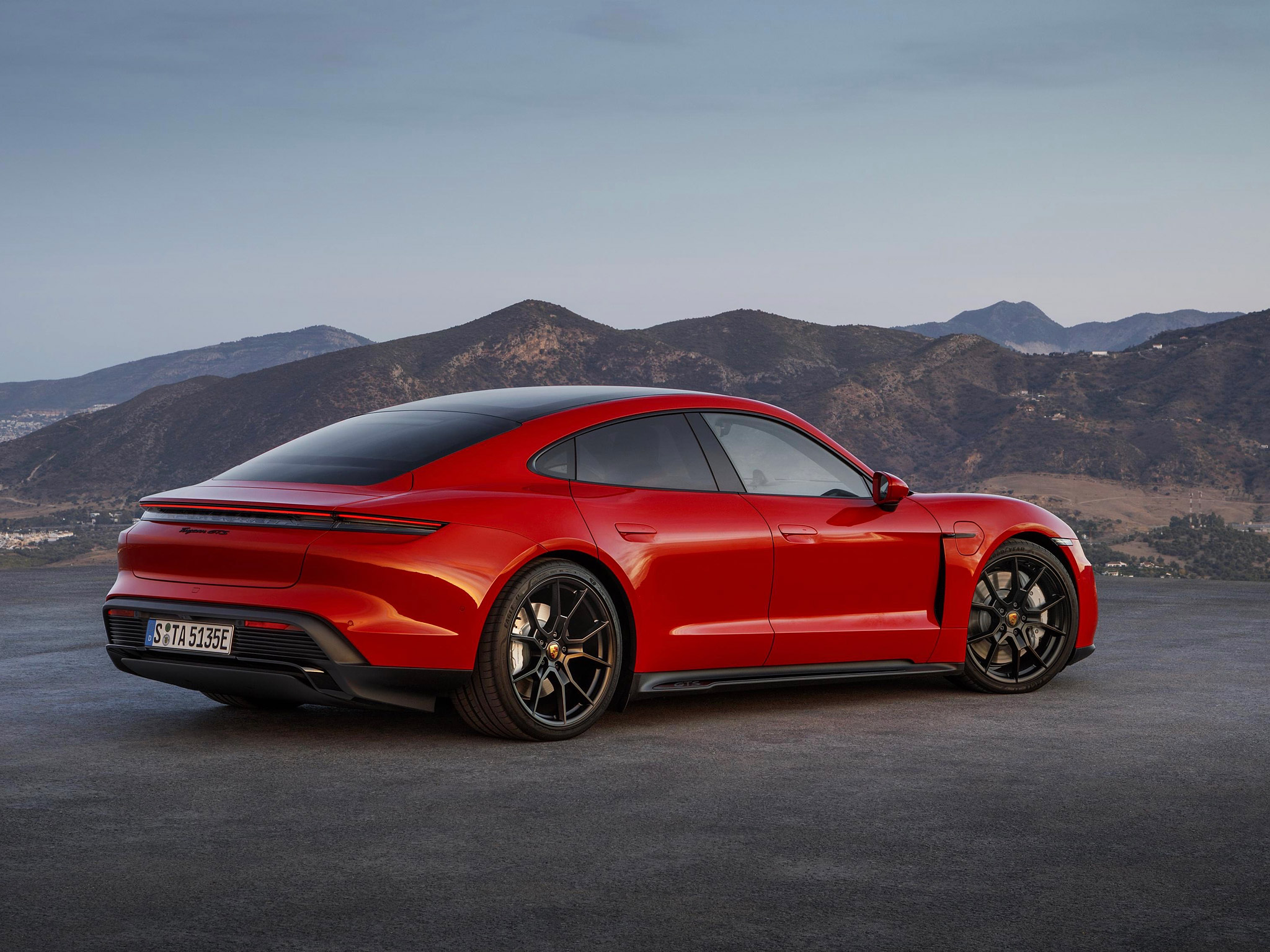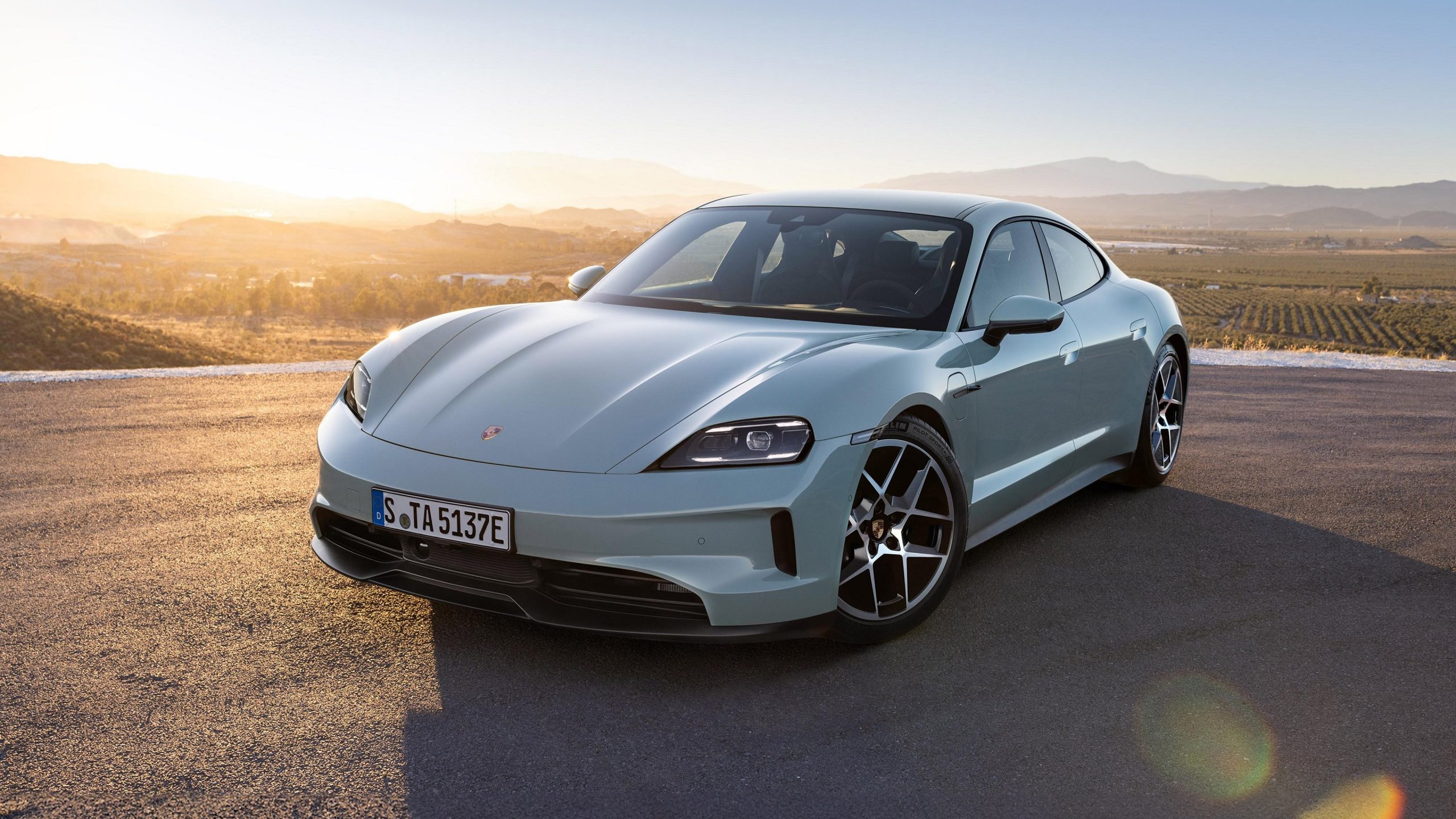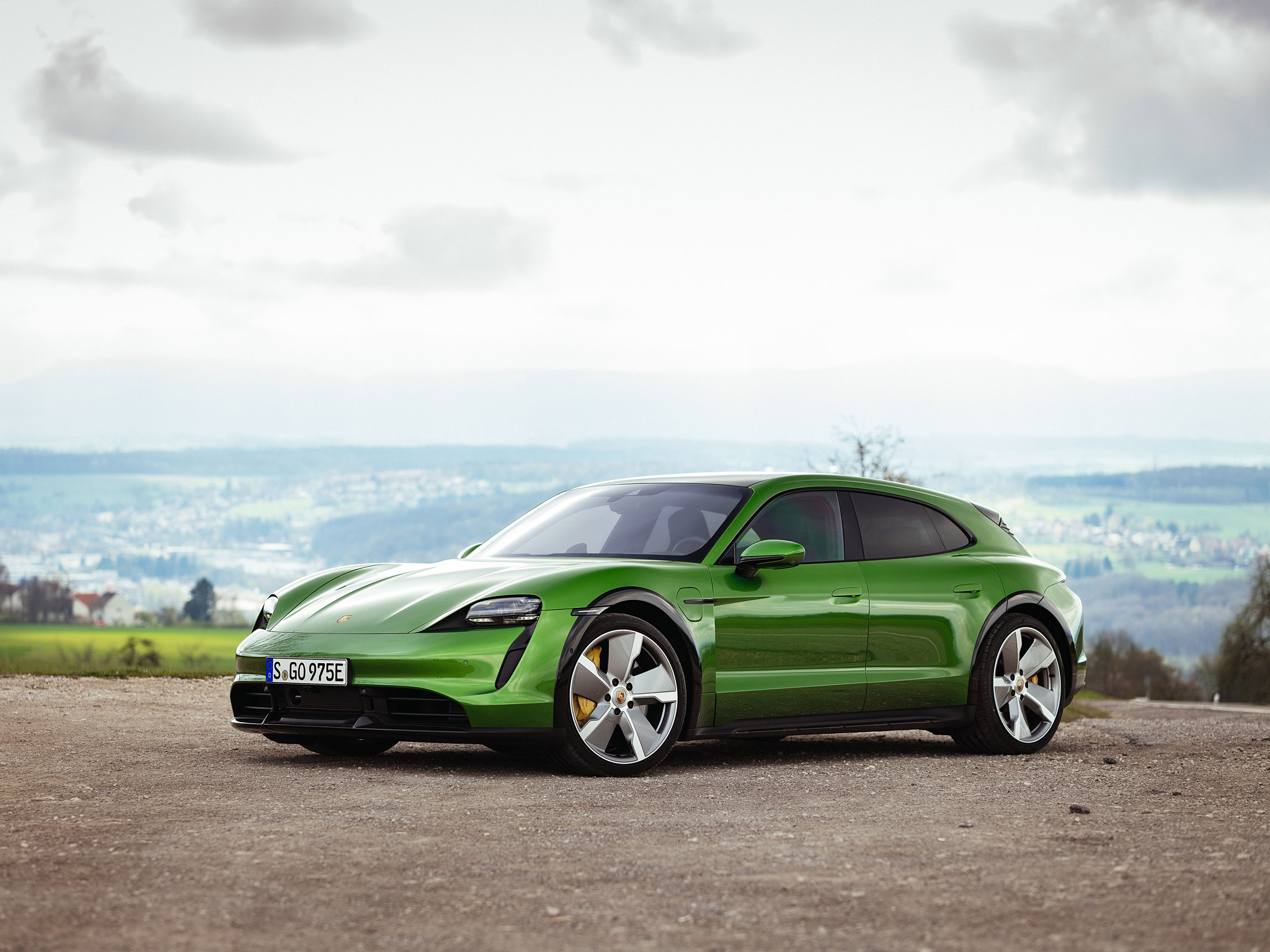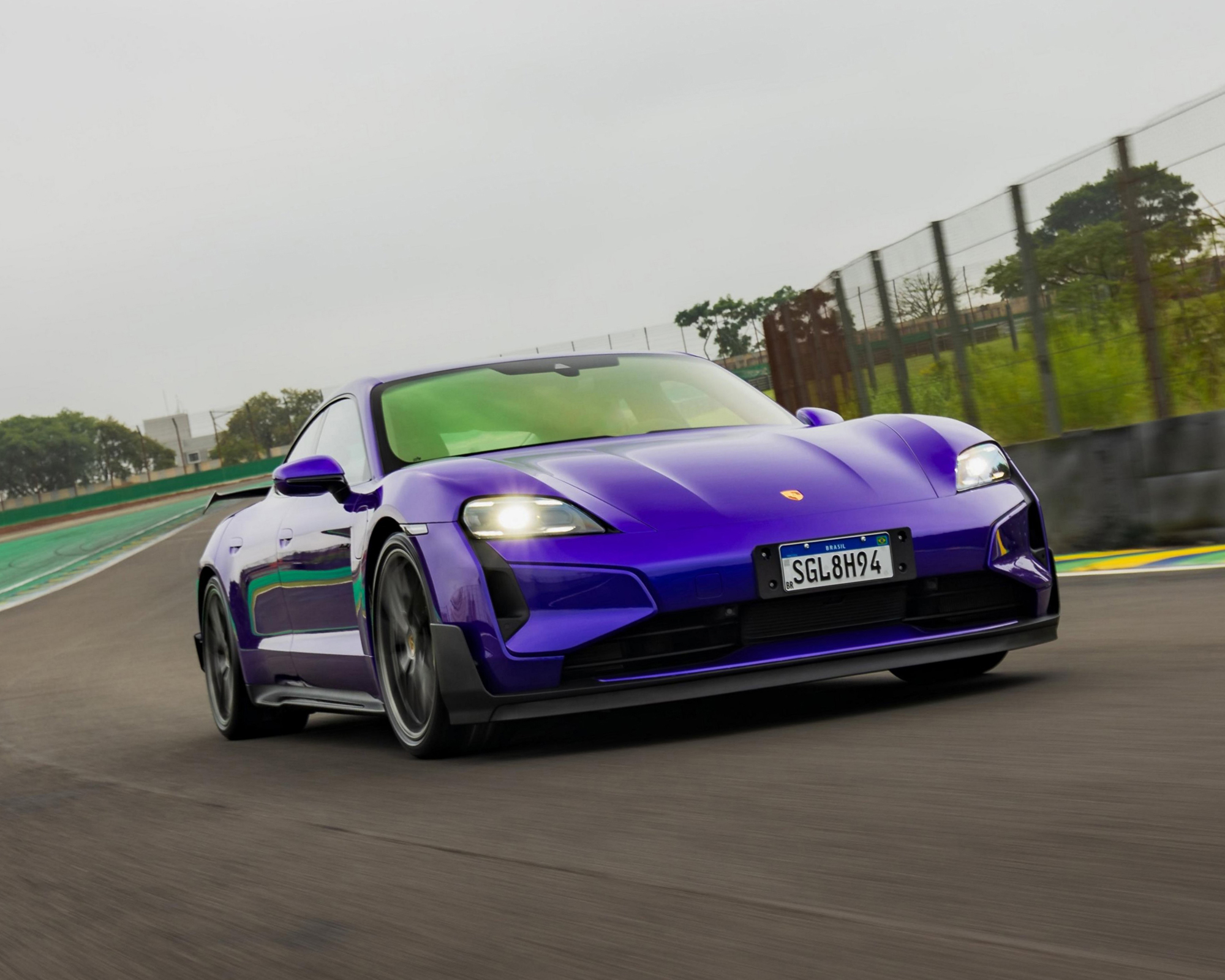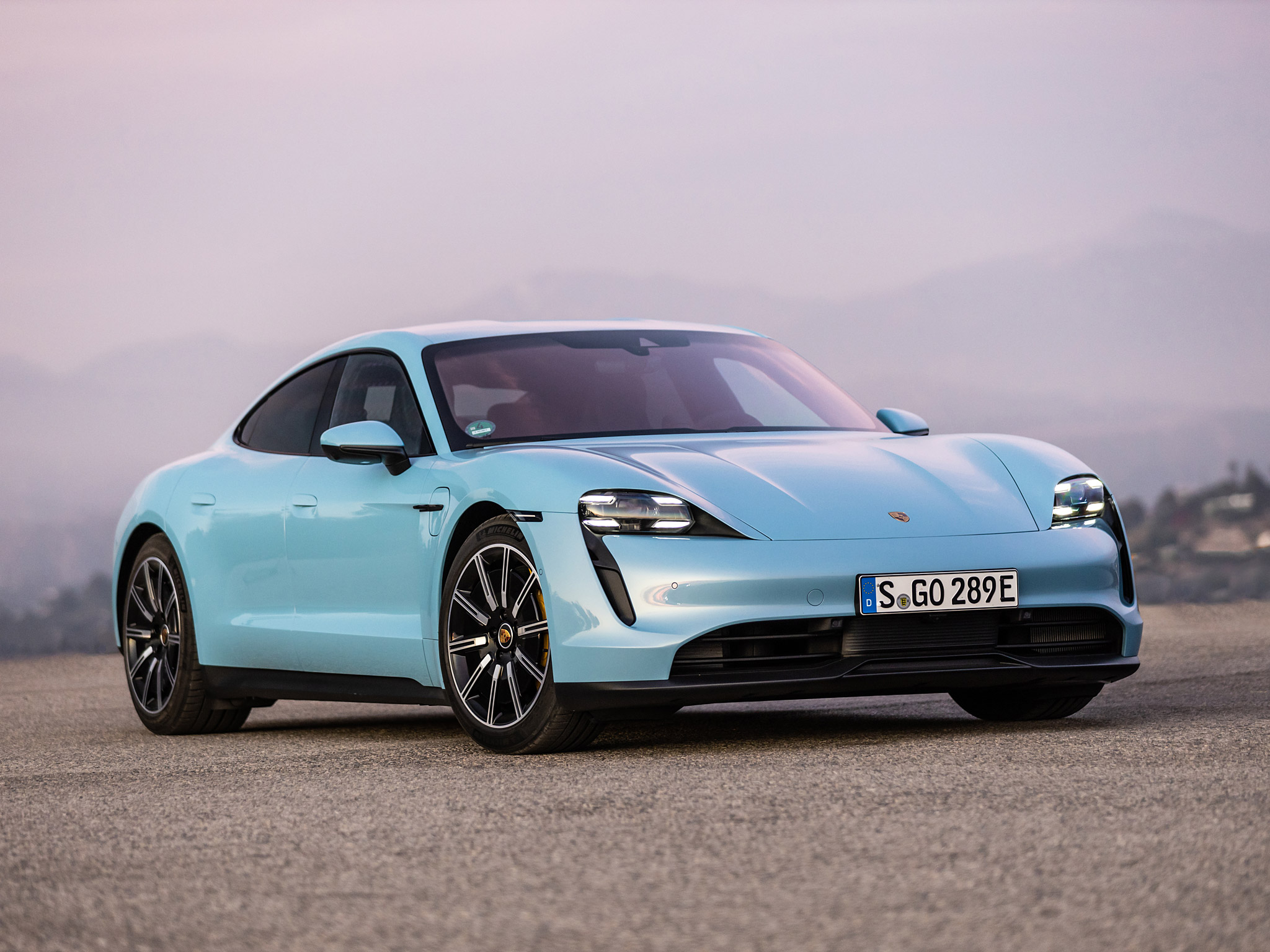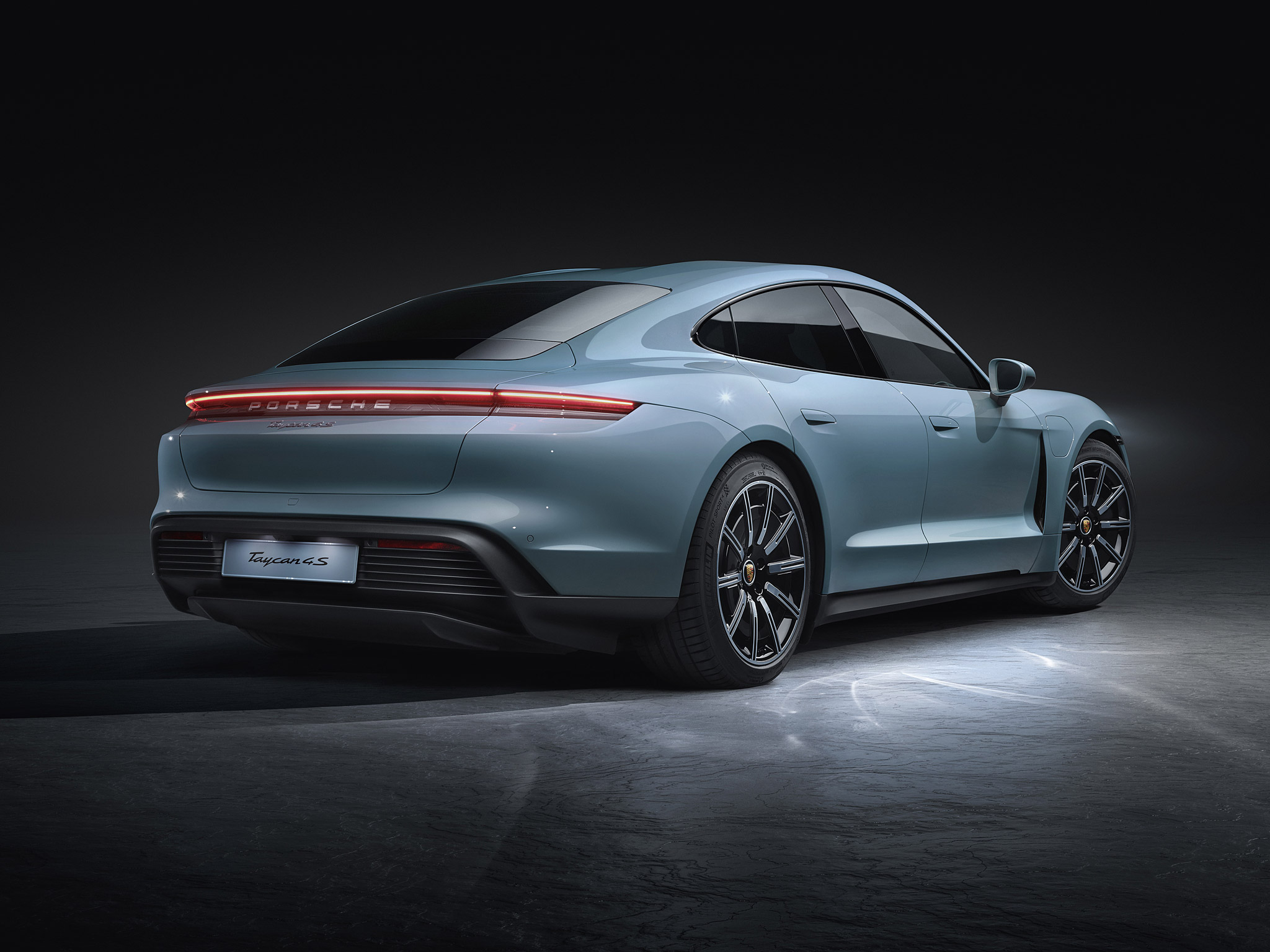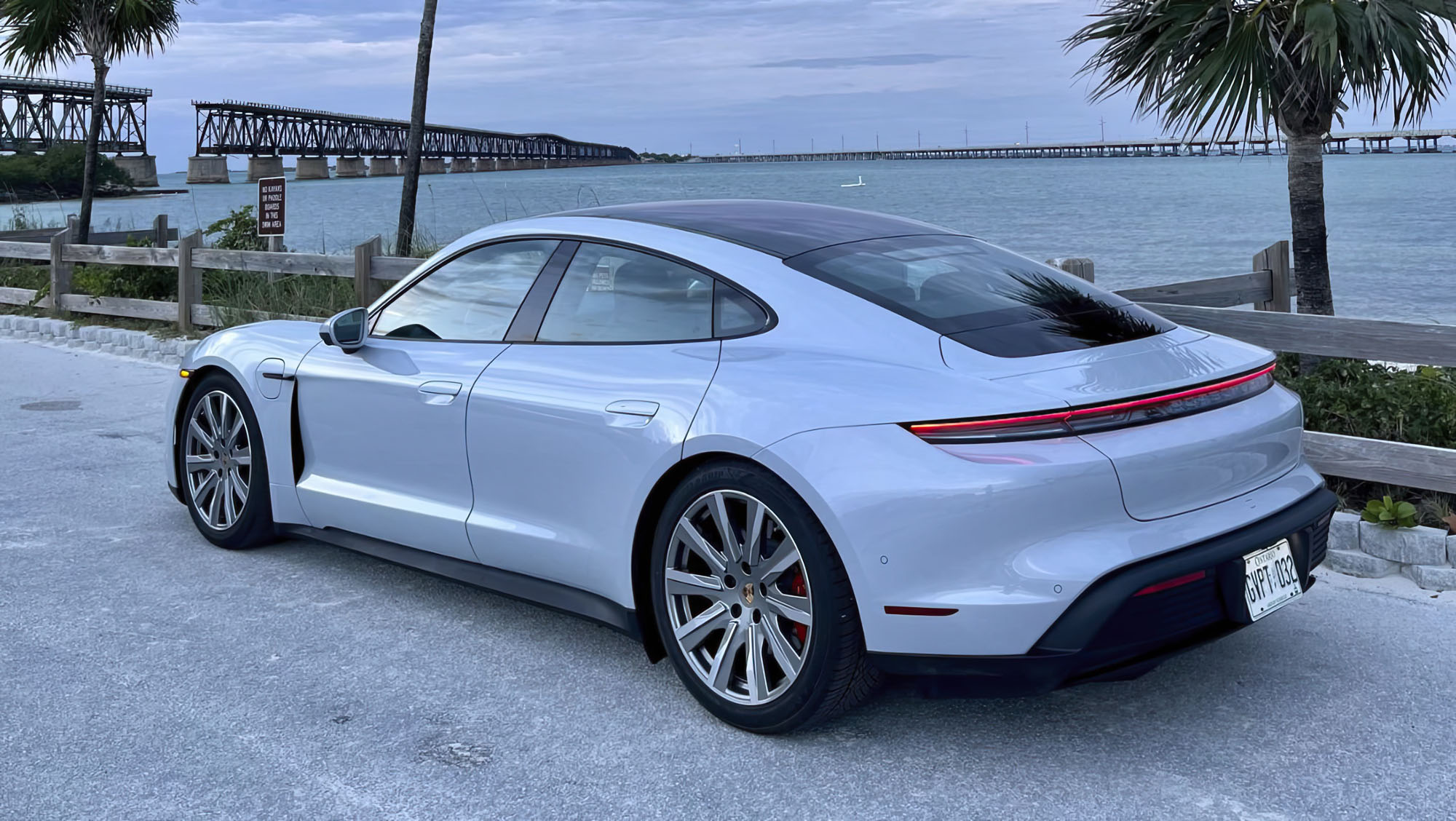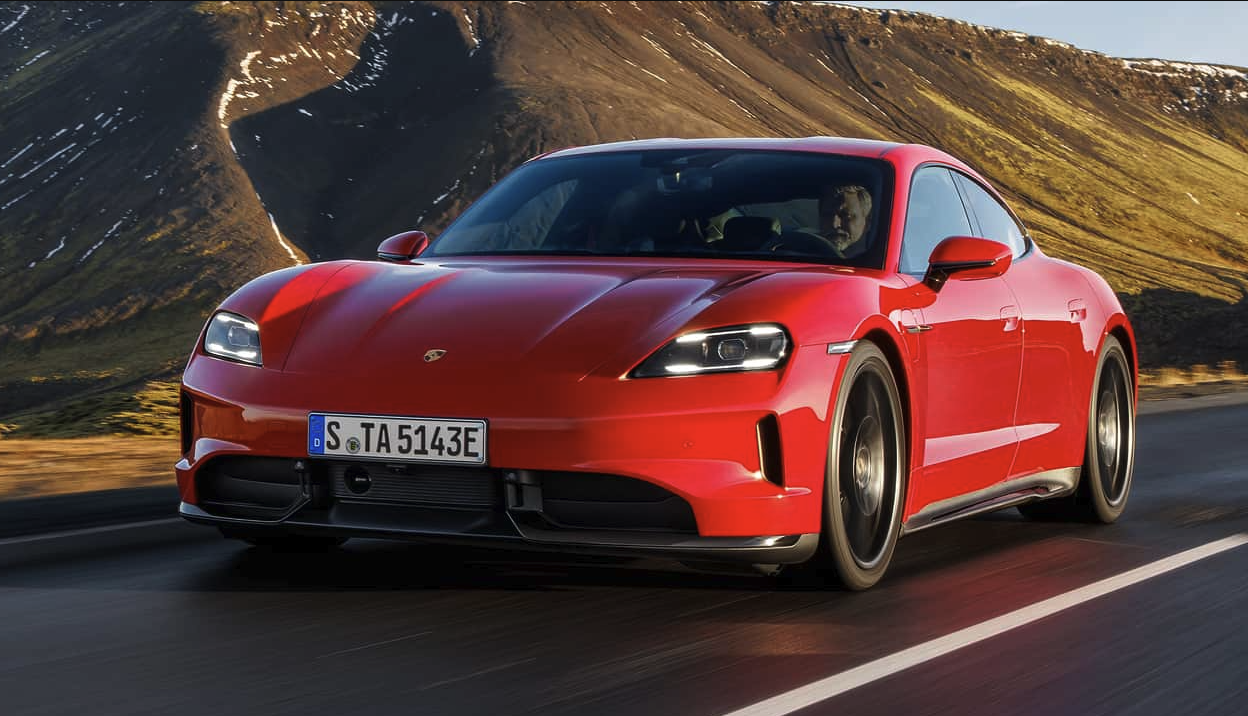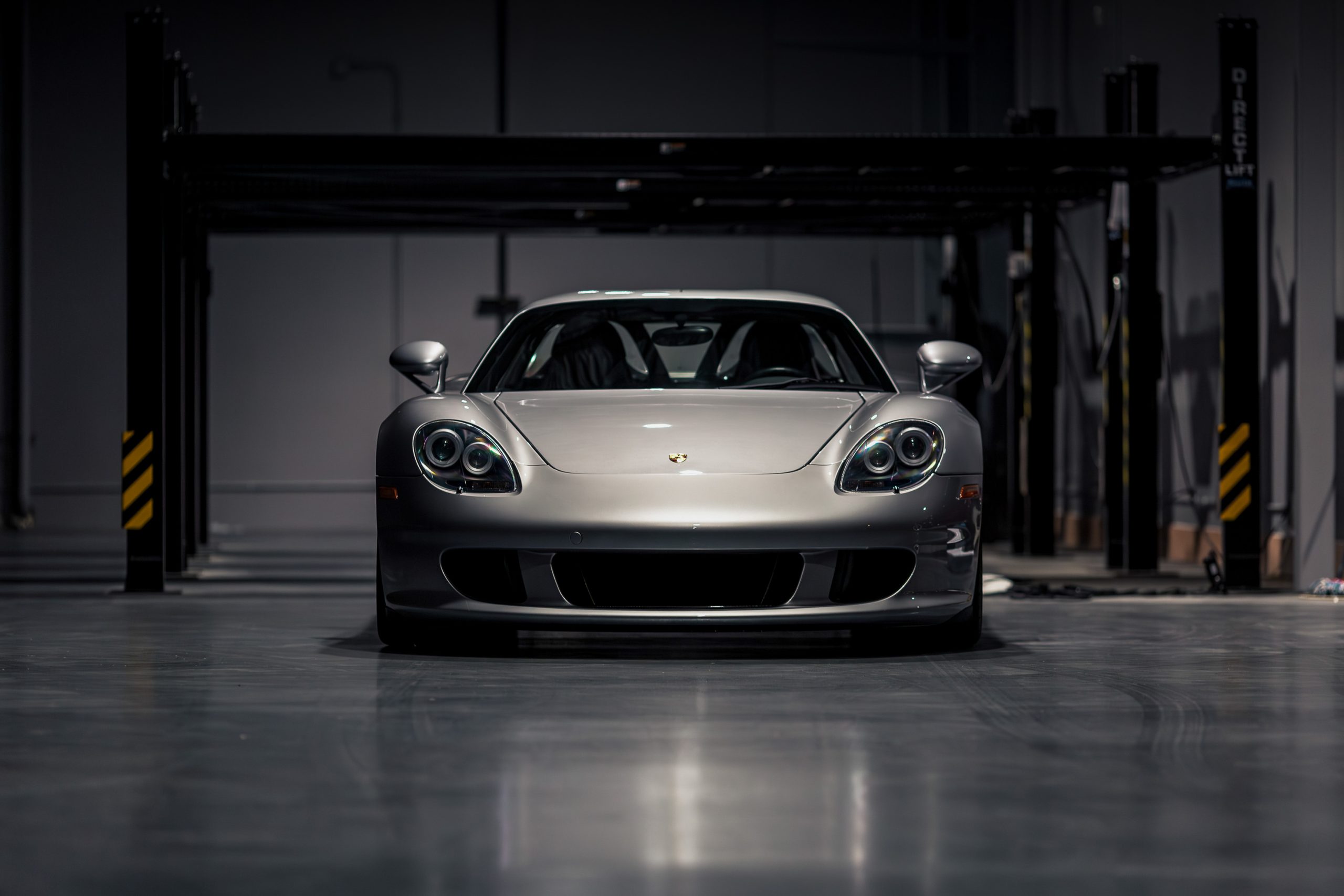1st Generation Porsche Taycan Buyer's Guide
Buying a first generation Taycan? Our Guide Covers Key Models, Potential Issues, Values, Tips & More.
PLEASE NOTE: For this post, we are focused on buying a used Taycan. Since the current Taycan is still on sale, you should check out our New Taycan buying guide.
The Porsche Taycan redefined what an electric vehicle could be when it launched in 2020—delivering not just blistering acceleration and sleek design, but also genuinely engaging, Porsche-caliber driving dynamics. As the first all-electric Porsche, it blended state-of-the-art EV engineering with the brand’s hallmark performance DNA, instantly becoming one of the most compelling luxury EVs on the market. Now, with the first generation (2020–2024) well into the used market and depreciation bringing prices down significantly, the Taycan is emerging as one of the best-kept secrets in the pre-owned performance world.
This Used Porsche Taycan Buyer’s Guide is your complete resource for understanding the full range of available models—from the single-motor base Taycan to the wild 750-horsepower Turbo S, including the Cross Turismo and Sport Turismo variants. We’ll walk you through the key differences between trims, what years to look for, and which options truly matter (hint: Performance Battery Plus and air suspension are high on the list). We also cover common issues, service considerations, warranty nuances, and what to expect in terms of long-term ownership and maintenance.
Whether you’re eyeing a value-packed 4S, a sporty GTS, or a top-tier Turbo at a steep discount, buying a used Taycan requires some expert insight—but the rewards are huge. You get genuine Porsche performance, an ultra-premium cabin, and futuristic tech—all at a fraction of the car’s original price. With the right knowledge and a bit of patience, the Taycan can be one of the smartest and most thrilling EV purchases you can make today.
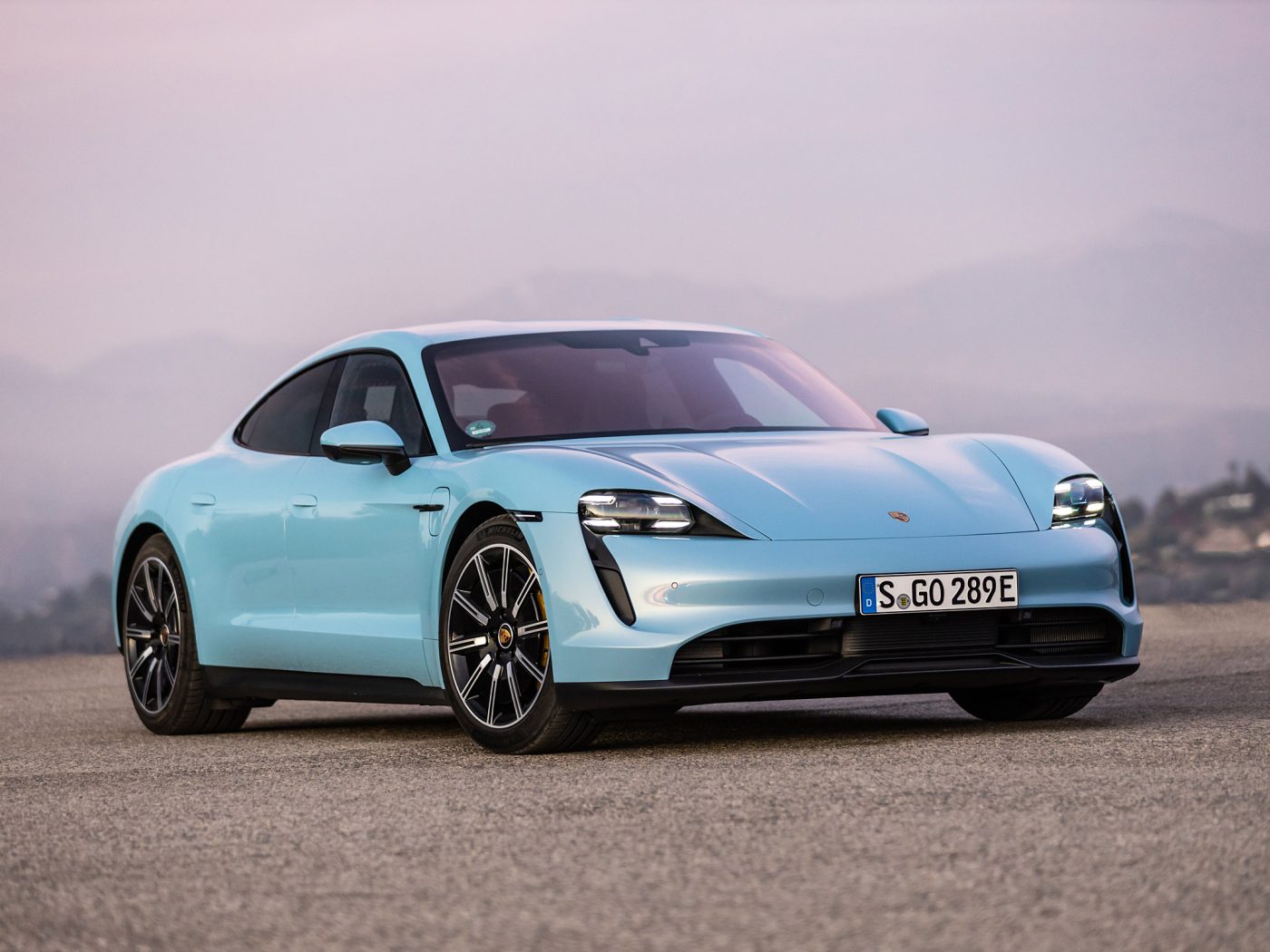
Why's the 1st Gen Porsche Taycan a Great Used Car
The first-generation Porsche Taycan (2020–2024) has quickly emerged as one of the most compelling used EVs on the market—especially for buyers who want more than just range and efficiency. While newer Taycans benefit from recent updates, the early models offer true Porsche performance, world-class engineering, and timeless design, all at a meaningful discount from their original six-figure price tags. As electric vehicles go, few blend technology and driver engagement quite like the Taycan, making it a standout in the pre-owned luxury EV space.
One of the main reasons the first-gen Taycan makes such a great used buy is that its core platform was excellent from day one. From the entry-level rear-wheel-drive Taycan to the top-tier Turbo and Turbo S, all variants deliver razor-sharp handling, near-instantaneous acceleration, and the kind of precise steering you’d expect from a brand with Porsche’s racing pedigree. Early criticism about range has largely been tempered with real-world data showing that most Taycans outperform their EPA ratings in normal use. Plus, software updates and improved charging networks have only enhanced the usability of early models over time.
In terms of interior quality and overall refinement, even the earliest Taycans feel thoroughly modern. The cabin is minimalist but unmistakably premium, with haptic touchscreens, crisp digital displays, and excellent material quality throughout. Porsche’s approach to the EV experience was to make something distinctly electric, but also unmistakably Porsche—a mission the Taycan delivered on better than any other legacy automaker’s first EV. Add in options like air suspension, 4D chassis control, and rear-wheel steering, and even a base model can feel special. Many used Taycans on the market today were highly optioned when new, offering more features than a comparably priced new EV.
Another key factor is value. The first Taycans depreciated quickly—as most luxury EVs do—especially the more expensive trims. That means used buyers can now access a car that once cost $130,000+ for tens of thousands less, with performance that rivals newer, more expensive rivals. Porsche’s 8-year/100,000-mile battery warranty adds confidence, and many of these vehicles are still under factory bumper-to-bumper coverage, especially 2022+ models. For EV enthusiasts or luxury car buyers looking to step into electric performance without compromising driving joy, the first-gen Taycan is one of the most rewarding used vehicles you can buy today.
1st Gen Taycan Variants - A Quick Primer for Potential Buyers On The Variants & Specials To Think About.
We already have ultimate guide to the first generation Porsche Taycan so we don't want to repeat everything here. Instead, we will give you a quick primer and summary about the main first generation Taycan variants, some of the core model year changes and we will talk about some special editions worth noting as you think about your potential purchase.
Key Variants & Differences
Before the significant 2025 update, the Porsche Taycan lineup (2020–2024) offered a diverse range of variants that blended electrification with true Porsche performance, each carefully tailored to different types of drivers.
Despite being Porsche’s first fully electric model, the Taycan arrived as a mature, well-engineered EV platform with variants that ranged from accessible to exotic. The differences between them went far beyond just horsepower figures—they reflected distinct personalities in handling, drivetrain configuration, range, and character.
At the entry point was the Taycan (Base), a rear-wheel-drive model introduced in 2021. It offered a single-motor layout and either the 79.2 kWh Performance Battery or the larger 93.4 kWh Performance Battery Plus. With up to 321 hp (or 375 hp with Overboost), it prioritized efficiency, lighter weight, and purity of response, making it a favorite among driving purists.
It was also the most affordable Taycan, offering the unmistakable Porsche feel in a sleek, minimalist package—ideal for city use and daily driving.
Next came the Taycan 4S, a dual-motor all-wheel-drive version that struck the best balance of performance, range, and price. With up to 522 hp (with Performance Battery Plus), the 4S was quicker and more capable in all weather conditions, yet still refined and efficient.
It also introduced many buyers to optional upgrades like air suspension, torque vectoring, and Porsche’s celebrated PASM chassis tuning. The 4S became the volume seller and arguably the most versatile model in the range.
Above that, Porsche introduced the Taycan Turbo and Turbo S, both dual-motor AWD beasts in name only—there’s no turbocharger, of course, but the branding signals performance parity with Porsche’s ICE counterparts.
The Turbo delivered up to 670 hp, while the Turbo S launched with a staggering 750 hp on Overboost and sub-2.7-second 0–60 mph times, making it one of the fastest production EVs in the world. These versions also came standard with top-tier tech and chassis upgrades, including rear-axle steering, carbon-ceramic brakes (Turbo S), and Porsche Dynamic Chassis Control. The Turbo models were performance statements—ideal for those who wanted Taycan design with supercar-like acceleration.
Porsche also diversified the Taycan with body style variants: the Sport Turismo (available mainly as a GTS) and the Cross Turismo, the latter a lifted wagon with rugged styling and standard AWD. The Taycan Cross Turismo 4, 4S, Turbo, and Turbo S offered more rear headroom, cargo space, and light off-road capability while retaining sharp road manners. These wagons expanded the Taycan’s appeal to families and enthusiasts looking for something more versatile.
Finally, Porsche added the Taycan GTS in 2022, positioned between the 4S and Turbo. With 590 hp, the GTS was tuned for maximum driver engagement, featuring sharper throttle mapping, tighter suspension, and distinctive styling cues. It quickly became a favorite among enthusiasts who wanted serious speed without the ultra-premium pricing or ultra-harsh ride of the Turbo S.
In 2025, Porsche gave the Taycan its first major update, bringing improved range, power, and efficiency across the lineup. All models saw gains in acceleration, thermal management, and battery cooling, while new trims like the Turbo GT and Turbo GT with Weissach Package pushed performance into track-day territory.
Though the overall formula remained the same, the 2025 refresh sharpened the Taycan and added even more distinction between variants, solidifying it as one of the most complete EV lineups in the industry.
Model Year Changes (2014-Present)
The Porsche Taycan, introduced for the 2020 model year, has evolved steadily through its first generation, with each model year bringing targeted improvements in performance, efficiency, features, and variant diversity. While the car was fundamentally strong from launch—offering exceptional driving dynamics, advanced thermal management, and Porsche-grade build quality—Porsche continuously refined the Taycan to stay ahead in the rapidly advancing EV landscape. Here’s an expert overview of how the Taycan changed year by year, up through the major 2025 update.
2020: Launch Year – Taycan Turbo, Turbo S, and 4S Debut
The Taycan arrived in 2020 with two high-performance AWD models: the Taycan Turbo (up to 670 hp) and the Taycan Turbo S (up to 750 hp with Overboost and Launch Control). These dual-motor flagships were positioned as electric counterparts to Porsche’s 911 Turbo lineup, emphasizing straight-line speed, dynamic handling, and all-weather capability. A few months later, Porsche introduced the Taycan 4S, which offered up to 522 hp and a more attainable entry point while still delivering AWD traction and serious performance. All models featured Porsche’s innovative two-speed rear axle transmission, 800-volt architecture, and Performance Battery or Battery Plus options. However, Apple CarPlay was wired only, and Android Auto was not yet available.
2021: Rear-Wheel Drive Taycan and OTA Tech Updates
For 2021, Porsche introduced the base Taycan, a rear-wheel-drive, single-motor model that significantly lowered the price of entry. Available with either the smaller 79.2 kWh battery or the larger 93.4 kWh Performance Battery Plus, this model made the Taycan more accessible and lighter on its feet, earning praise for its balance and purity. Software updates became available via over-the-air (OTA) delivery, improving efficiency and charging behavior. Range ratings also slightly improved, though real-world performance already exceeded the official EPA numbers in many cases. New color and trim options were added, and Porsche continued to refine thermal and battery management.
2022: Taycan GTS Debuts, Sport Turismo Introduced
The Taycan GTS joined the lineup in 2022, positioned between the 4S and Turbo with 590 hp and a performance-focused chassis tune. It quickly became the enthusiast’s choice, thanks to sharper throttle mapping, tighter PASM settings, and sportier aesthetics. More importantly, the GTS Sport Turismo introduced the sleek wagon body style in a non-offroad configuration, combining the cargo space of the Cross Turismo with the stance and ride height of the sedan. This year also brought Android Auto integration, updates to the infotainment system (PCM), and improvements in cold-weather range management.
2023: Subtle Enhancements and Expanded Variants
By 2023, the Taycan lineup had grown into one of the most diverse in the EV market, offering sedan, Cross Turismo, and Sport Turismo body styles across multiple performance tiers. Porsche continued to refine efficiency and battery software, resulting in modest real-world range gains. The Taycan GTS and 4S Sport Turismo became more widely available across markets, and the infotainment system saw additional usability updates. Although no major mechanical changes occurred, 2023 solidified the Taycan as a mature, well-rounded product with trims suited to nearly every type of buyer—from luxury EV commuter to track-day enthusiast.
2024: Final Year Before Major Refresh
The 2024 Taycan saw minor changes, mostly focused on streamlining options and preparing for the incoming 2025 refresh. Cosmetic tweaks, feature bundling, and simplified trim configurations marked the year. Performance remained unchanged, and by this point. In 2025, Porsche delivered a comprehensive update to the Taycan lineup.
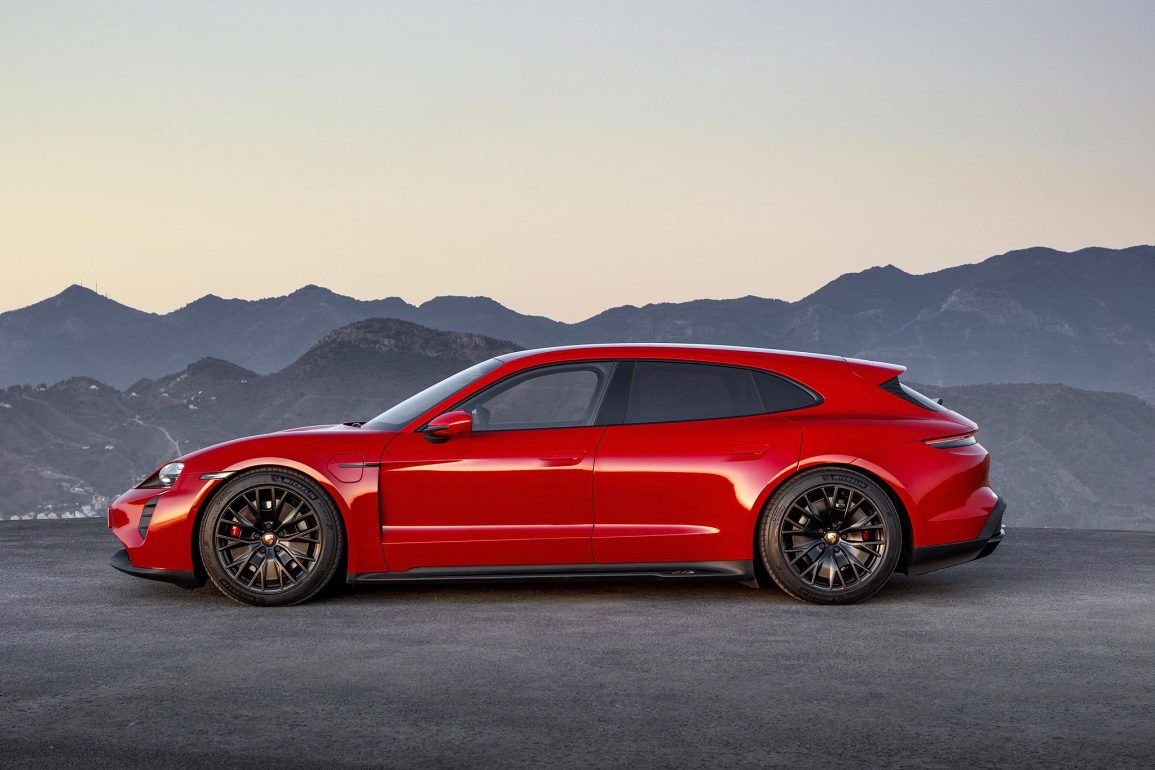
First Generation Porsche Taycan Market Value & Pricing
The pre-2025 Porsche Taycan has become one of the best-value used luxury performance EVs on the market—largely due to how hard it’s been hit by depreciation. Like most high-end electric vehicles, the first-gen Taycan (2020–2024) launched with high enthusiasm and six-figure price tags for many trims, only to experience significant value drops within just a few years. Factors like shifting tax incentives, ongoing uncertainty in the used EV market, and the rapid pace of tech advancement have made early Taycans depreciate faster than equivalent gas-powered Porsches. But for savvy buyers, that represents a major opportunity.
Used examples of well-optioned Taycan 4S models, which could easily sticker for $115,000 new, are now frequently found in the $65K–$80K range, with earlier 2020–2021 builds dipping into the high $50Ks. Even more dramatic are the values of Taycan Turbo and Turbo S models, which once pushed $160,000 with options but can now be had for $75K–$100K, depending on mileage and condition. That kind of depreciation curve isn’t a reflection of the car’s quality—because the Taycan is still one of the best-driving EVs ever built—but rather a sign of the EV market’s volatility and how quickly new tech reshapes expectations.
That said, certain trims are weathering the storm better than others. The Taycan GTS—offered from 2022 onward—has emerged as the enthusiast’s favorite and holds value better than most, thanks to its balanced performance, daily usability, and unique positioning between the 4S and Turbo. GTS models still command strong resale pricing, often in the $85K–$95K range, and are less commonly found with bargain pricing unless they’re high-mileage or lightly optioned. Similarly, Cross Turismo and Sport Turismo body styles, with their added practicality and rarity, tend to retain value slightly better than equivalent sedans.
However, with the 2025 Taycan refresh introducing significant performance, efficiency, and tech updates across the entire lineup, the used market is now at a bit of a crossroads. The new models charge faster, drive further, and come with sleeker infotainment—and that could soften demand for pre-refresh cars even further. Still, when comparing a well-optioned 2022 GTS or Turbo with a new base or mid-tier 2025 Taycan, the price gap can be huge—$30K–$50K or more—for what remains an outstanding and highly capable vehicle. For buyers who prioritize driving dynamics, build quality, and value over absolute range or screen updates, the pre-2025 Taycan is arguably one of the best-kept secrets in the used EV space right now.
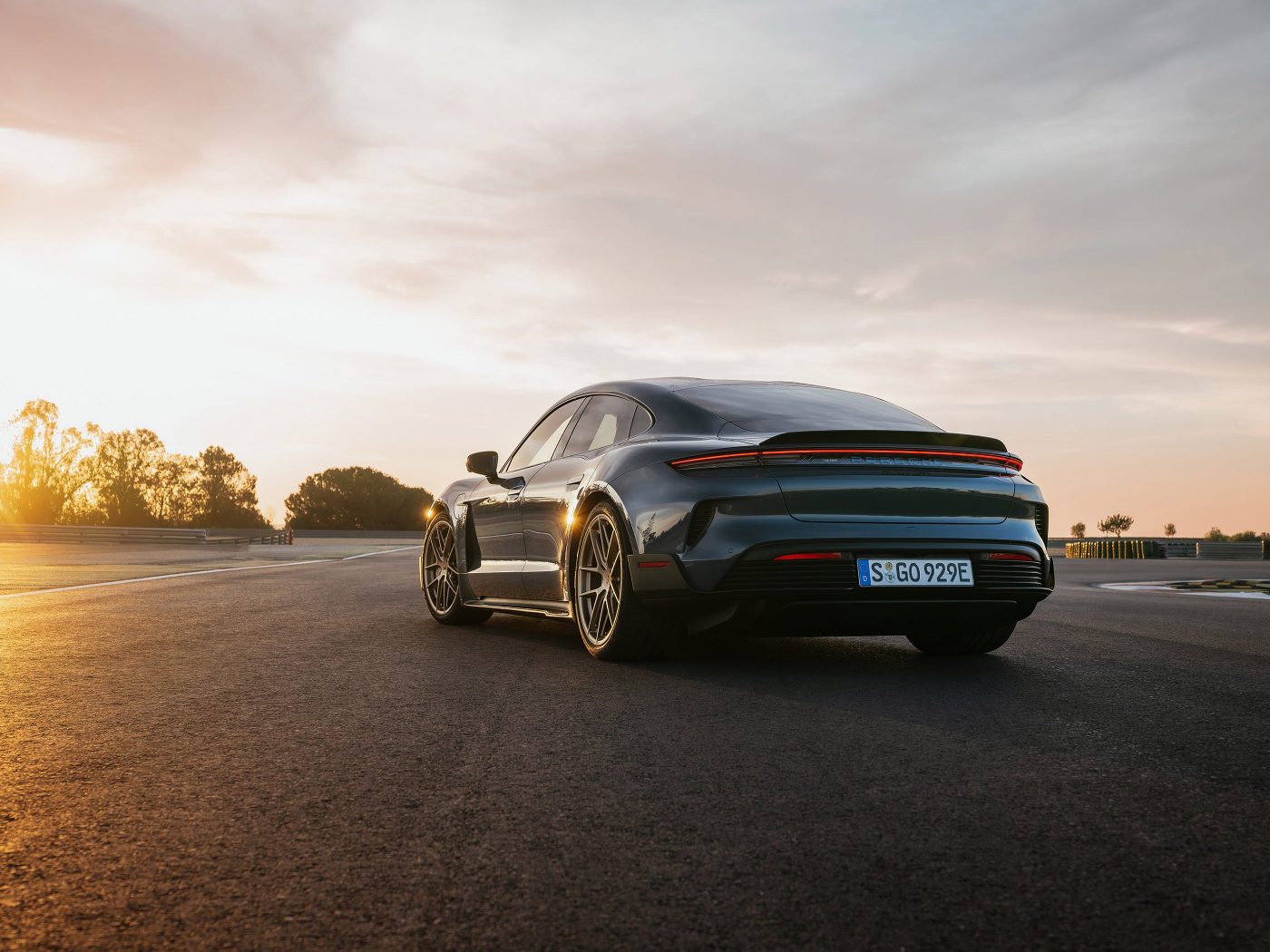
1st Gen Taycan Driving Experience & What to Expect
What They Said at The Time
When the Porsche Taycan debuted in 2020, it was met with widespread acclaim from automotive journalists, who praised its performance, handling, and the way it redefined expectations for electric vehicles (EVs). MotorTrend highlighted the Taycan's dynamic capabilities, noting its "impressive performance and handling" and describing the driving experience as "like being fired out of a railgun," emphasizing the car's rapid acceleration and precise braking.
Car Magazine lauded the Taycan 4S for its balance of performance and usability, stating that it "forces its way into that conversation" of great Porsches, not just great electric cars. The publication emphasized the Taycan's "taut, clean and nicely defined steering" and "extraordinary body control," highlighting its ability to deliver a driving experience akin to Porsche's traditional sports cars.
Wired's review focused on the Taycan's blend of performance and practicality, noting that it "makes a significant impact as a high-performance electric saloon car," with its "unique 800-volt power system" and "two-speed gearbox" setting new standards for EVs. The article also praised the Taycan's charging capabilities, stating that it could be charged from 4 to 87 percent in just 30 minutes with an Ionity charger, making it a formidable entrant in the EV market.
Overall, the consensus among journalists was that the Porsche Taycan successfully merged the brand's performance heritage with cutting-edge electric technology, offering an engaging driving experience without compromising on the benefits of electrification.
What to Expect Today
The first-generation Porsche Taycan delivers one of the most engaging, refined, and well-sorted driving experiences of any EV ever built—full stop. From the moment you take the wheel, it’s clear that Porsche approached electrification with its traditional engineering philosophy: build a car for drivers first, then make it electric. Whether you’re in the entry-level rear-wheel-drive model or the explosive Turbo S, every Taycan shares the same DNA—precision steering, incredible body control, and a sense of cohesion and feedback that no other EV quite matches.
Handling is where the Taycan truly stands out from its rivals. The car’s low center of gravity, thanks to its skateboard-style battery pack, combined with its rear-biased AWD system (on dual-motor trims), allows it to feel agile and planted through corners. Porsche’s two-speed transmission on the rear axle gives it an unusual blend of snappy low-speed acceleration and strong high-speed thrust—something you don’t get in single-speed EVs. Whether you’re hustling a Taycan 4S on a winding back road or cruising in a base RWD Taycan through city streets, the car feels incredibly composed. Even large, heavy trims like the Cross Turismo feel surprisingly nimble, thanks to smart chassis tuning, adaptive air suspension, and optional rear-wheel steering.
Performance, of course, is startling across the board. The base Taycan is no slouch, delivering up to 375 hp (with Overboost), but it’s the 4S, GTS, and Turbo models where things escalate. The 4S (up to 522 hp) hits 60 mph in about 3.8 seconds, while the Turbo and Turbo S offer hypercar-like acceleration—the latter rocketing from 0–60 mph in just 2.6 seconds. And yet, unlike many EVs that deliver speed with little drama, the Taycan feels composed and connected even under hard driving. Braking is another standout feature: Porsche’s regenerative and mechanical braking systems blend seamlessly, giving the Taycan an edge over nearly every competitor in terms of pedal feel and predictability.
As a daily driver, the Taycan is surprisingly practical. Ride comfort—especially with the air suspension—is excellent, cabin noise is well isolated, and the interior is beautifully built with high-quality materials. While interior space isn’t massive (especially in the rear), the Cross Turismo and Sport Turismo variants add welcome headroom and hatchback utility. The charging experience has improved over time, and with 800-volt architecture, Taycans charge faster than nearly any other EV when plugged into a high-speed DC fast charger. Real-world range is better than early EPA figures suggested, particularly on the RWD and 4S models with the Performance Battery Plus.
For buyers considering a used Taycan, the key takeaway is this: it’s still very much a Porsche. It rewards enthusiastic driving without compromising daily comfort, and it offers a level of engagement that many luxury EVs lack. If you can find a well-specced Taycan—especially a 4S or GTS—it offers a blend of cutting-edge EV tech, timeless Porsche design, and sublime handling that’s hard to beat, especially at today’s used prices. It’s not just a good electric car—it’s a great car, period.
Getting Real - Costs to Own & Maintenance
Owning and maintaining a Porsche Taycan—especially a used model from the first generation (2020–2024)—is a more predictable and, in some cases, more affordable experience than you might expect for a six-figure luxury EV. Still, it’s important to understand what to expect in terms of routine maintenance, long-term ownership costs, parts availability, and insurance, particularly as early Taycans (2020–2021) begin to exit their factory warranties while newer ones retain full coverage.
Routine Maintenance & Service Costs
One of the big upsides of EV ownership is the lack of oil changes, spark plugs, or traditional engine servicing, and the Taycan is no exception. That said, it's still a Porsche, and regular service is required. Expect scheduled maintenance every two years or 20,000 miles, which includes brake fluid replacement, cabin filter changes, software checks, and battery diagnostics. These appointments typically cost $400 to $800, depending on the dealership and the depth of the service.
Brake pads and rotors—especially on higher trims like the Turbo or Turbo S with regenerative braking and optional PCCB (Porsche Carbon Ceramic Brakes)—wear slowly in daily driving but can be expensive to replace if worn out. Out-of-pocket brake jobs can run $1,500–$4,000 or more depending on components and labor. Tires, too, wear quickly on performance variants, and premium EV-rated rubber isn't cheap.
Parts Availability & Independent Service
Parts availability for the Taycan has been good overall, especially for mechanical and cosmetic items. Porsche has ensured a robust global support system, and the Taycan shares some components with other Porsche models (brakes, suspension bits, interior controls), which helps with long-term serviceability. That said, software, battery modules, and charging system components are tightly integrated, meaning many repairs still require Porsche dealer-level diagnostics.
As the model ages, independent Porsche specialists are beginning to take on more Taycan service, but deep EV repair expertise (like battery or drivetrain diagnostics) is still largely dealership-bound. Porsche does offer Prepaid Maintenance Plans and Extended Warranty programs, which can help soften long-term costs, particularly if you're buying a used Taycan out of factory coverage.
Warranty Status: In vs Out
Porsche offers a 4-year/50,000-mile new car warranty, which includes coverage for most components, and a separate 8-year/100,000-mile warranty on the high-voltage battery and electric drivetrain. That means many 2020 Taycans are now coming to the end of their bumper-to-bumper coverage, while 2021–2023 cars are still under factory warranty. If you're shopping for a used Taycan, it's worth prioritizing one that is either still within factory coverage or part of Porsche's Certified Pre-Owned (CPO) program, which extends warranty protection up to 6 years with unlimited mileage from the in-service date.
Cars without warranty—especially Turbo or Turbo S models with complex components like air suspension, rear-wheel steering, or premium brake systems—should be approached with caution unless you have a thorough service history and a clean pre-purchase inspection. Post-warranty EV repairs can be expensive if electrical modules or battery components are involved.
Insurance & Running Costs
Insurance costs for the Taycan tend to be higher than average, reflecting both the car’s performance and repair costs. Annual premiums typically range from $1,800 to $3,500, depending on the trim level, your driving history, and location. Models like the Turbo and Turbo S, as well as those with custom paint or carbon-ceramic brakes, can push premiums even higher due to their high replacement values and parts complexity.
Daily running costs are relatively low thanks to EV efficiency—charging at home is significantly cheaper than filling a gas tank, and regenerative braking reduces wear on brake components. However, those who use public DC fast charging networks frequently (especially Porsche’s Electrify America partnership) should factor in membership plans or pay-per-use costs, particularly if you drive long distances often.
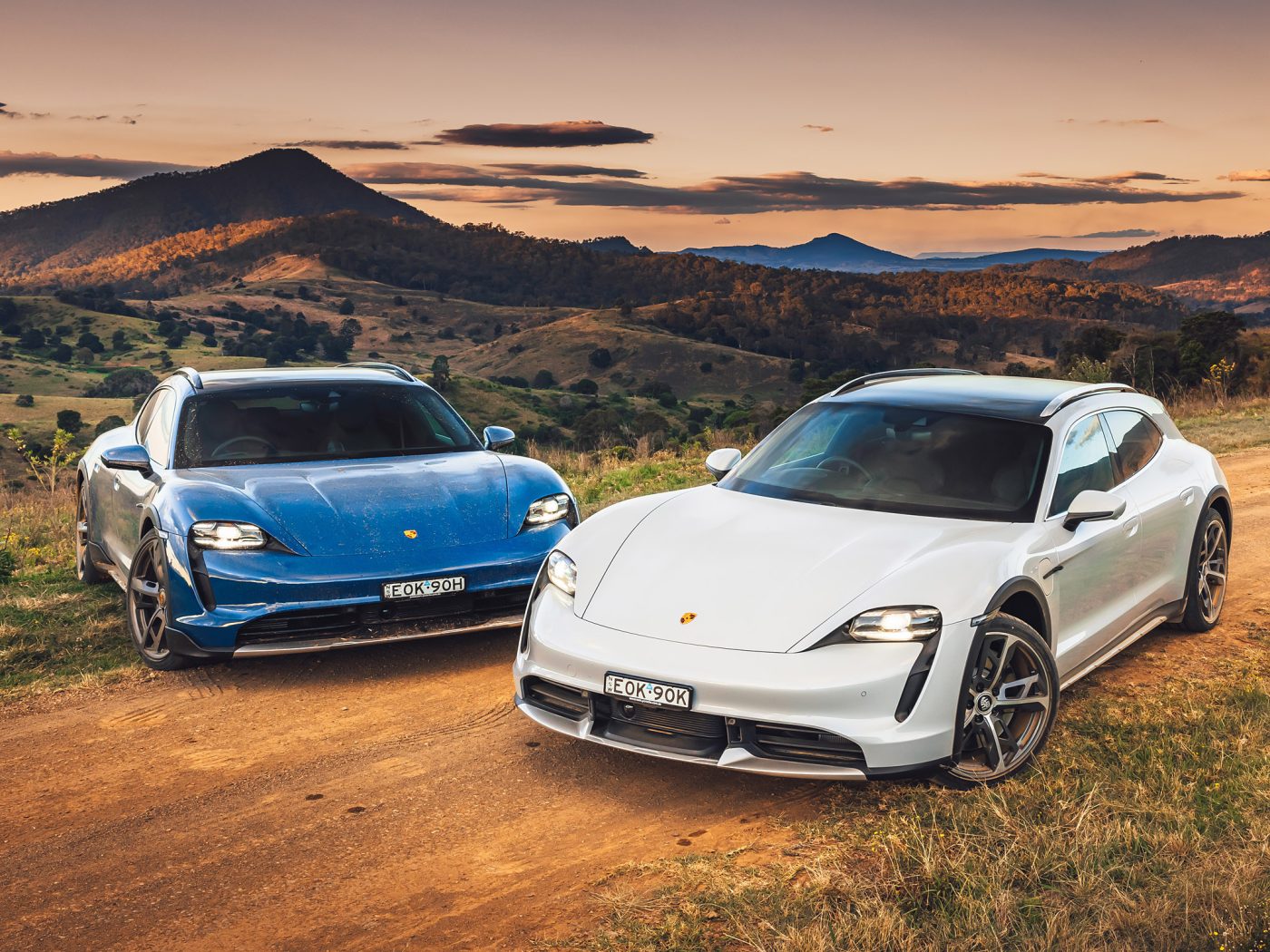
Common 1st Gen Porsche Taycan Problems
What Buyers Should Know
While the Porsche Taycan has proven to be one of the most well-built and technically impressive EVs on the market, especially among luxury brands, it’s not without its issues. As with any first-generation, high-tech vehicle—particularly one with complex battery, software, and performance systems—early Taycan models (2020–2021) experienced more growing pains than later versions. Still, many of the common problems are manageable, and some have been addressed through software updates or warranty repairs. Here’s what you should know as a prospective buyer.
1. 12-Volt Battery Failure
One of the most common issues across early Taycan models is unexpected failure of the 12-volt auxiliary battery, which powers key vehicle systems (like locks, lights, and infotainment) and helps initialize the high-voltage battery. When it fails, it can leave the car unable to start or enter "safe mode," even if the main battery is fully charged. This issue was widely reported in 2020–2021 cars and led to multiple service bulletins. Porsche has since updated the 12V battery supplier and software management systems, but older Taycans may still need a battery replacement or software patch to resolve the problem permanently.
2. Charging Glitches & Communication Errors
Taycan owners—particularly in early build years—have experienced charging interruptions or slow DC fast charging speeds, often due to communication errors between the vehicle and the charger. This was more common when using Electrify America or third-party networks. Sometimes the car would fail to initiate charging or stop unexpectedly. These issues were often software-related, and Porsche has issued several updates to improve charge port communication protocols. Ensuring your Taycan has the latest software is crucial, and 2022+ models are notably more reliable in this area.
3. Infotainment System Bugs
The Taycan introduced Porsche’s updated PCM system with multiple haptic-touch displays and deep menu integration—but early software versions were prone to glitches. Reported problems include frozen screens, Bluetooth dropouts, GPS malfunction, and delayed rear-view camera activation. Many of these issues have been resolved through over-the-air or dealer-installed software updates, but some early vehicles may still need in-person service to bring everything up to date. While not a deal-breaker, buyers should test every system during a pre-purchase inspection and confirm the car is running current software (ideally MY2023 or later updates).
4. Range Discrepancies & Battery Conditioning Concerns
When the Taycan first launched, EPA range estimates were conservative—and some owners reported worse-than-expected range in real-world use, particularly in cold climates. Later software updates optimized thermal management and charging efficiency, improving real-world range and reducing vampire drain (loss of charge when the car is parked). That said, Taycans still don’t match Tesla or Lucid on efficiency metrics. Buyers should know their driving patterns and charging access to avoid surprises, especially with early RWD models that may lack battery preconditioning features unless optioned.
5. Brake Wear & Cost in High-Performance Models
While EVs typically see reduced brake wear thanks to regenerative braking, Taycan drivers—particularly those with Turbo or Turbo S trims—should be aware that brake servicing can be expensive, especially with optional Porsche Carbon Ceramic Brakes (PCCB). Most street use won’t demand replacement for years, but worn ceramics are extremely costly to replace (up to $10K+). Even steel brake-equipped Taycans use large, performance-grade components that carry premium service costs. A PPI should include a brake wear check—especially on CPO or off-lease performance models.
Final Thoughts
Most Taycan problems are not structural or dangerous, but they stem from the car’s complexity—especially its early software and charging ecosystem integration. Many of the most common complaints (12V battery, infotainment bugs, charging quirks) have been addressed in later builds and through software updates. If you’re considering a used Taycan, prioritize 2021+ models or 2020s with complete service and software history, and have the car inspected by a dealer or Porsche specialist to confirm it’s fully up to date. In return, you get one of the most rewarding and well-built electric cars on the market—a true Porsche that just happens to be electric.
Buying A 1st Gen Porsche Taycan FAQs
Here are all the questions we've received from readers considering a Taycan.
What are the top five things to look for when buying a used Porsche Taycan?
When buying a used Porsche Taycan, especially from the first generation (2020–2024), there are a handful of key areas that can make or break the ownership experience. While the Taycan is one of the most capable and rewarding EVs on the road, it’s also a complex, performance-focused machine with early-model quirks and high-stakes repair costs if issues arise. Here are the top five things to look for when buying a used Taycan, with expert insight on what to check and why it matters.
1. Battery Warranty Status & Charging Health
Always check the status of both the high-voltage battery warranty (8 years/100,000 miles) and the 12-volt auxiliary battery, which has been a known weak point in early Taycans. The 12V battery failing can cause no-start conditions, so ask whether it has been replaced. Additionally, ensure the car charges properly on both Level 2 AC and DC fast chargers. Ask for a charging log or demonstrate a charging session to rule out handshake failures or software bugs—issues more common in 2020–2021 models.
2. Software Updates & Infotainment Stability
Many Taycan bugs—especially infotainment glitches, charging communication errors, and even HVAC quirks—were resolved through Porsche’s over-the-air (OTA) software updates. Confirm the car is running the most current software version (ideally a MY2023 update or newer). Test Apple CarPlay, Bluetooth, navigation, rearview camera, and the various drive mode selectors. Glitches in the PCM interface were common in early builds and may indicate the car needs an update—or has been neglected.
3. Certified Pre-Owned (CPO) or Remaining Warranty Coverage
Factory warranty on 2020 models is ending (4 years/50,000 miles), so it's vital to check whether the car is still under coverage—or better yet, sold through Porsche’s Certified Pre-Owned program, which adds 2 additional years of unlimited-mileage coverage. The CPO route is strongly recommended for Taycans, especially high-performance trims like the Turbo or Turbo S, where repairs can be especially costly if not under warranty.
4. Options That Matter (Battery Plus, Air Suspension, Sport Chrono)
Not all Taycans are created equal. Be sure to check if the car has the Performance Battery Plus (93.4 kWh), which significantly improves range and charging speed—especially on base and 4S models. Air suspension and Sport Chrono transform the driving experience, allowing for better ride quality and multiple performance modes. Cars without these options can feel more basic and may have weaker resale appeal. Also look for Adaptive Cruise, 14-way seats, surround-view camera, and premium audio—comfort options that make a big difference day-to-day.
5. Pre-Purchase Inspection & Charging Port Check
As with any used Porsche, a pre-purchase inspection (PPI) from a dealership or EV-qualified independent shop is a must. Have them inspect the brakes, tires, suspension, and check for software errors. Pay particular attention to the charge ports, as there have been occasional issues with charging flap motors failing or ports failing to lock. These aren’t catastrophic but can be expensive and annoying if not caught early.
How important are service records and ownership history on such modern cars?
Even with modern vehicles like the Porsche Taycan, service records and ownership history remain critically important, especially as the first generation (2020–2024) enters the used market in larger numbers. While EVs in general require less mechanical maintenance than internal combustion cars, the Taycan is still a high-performance, luxury vehicle with complex electronics, software updates, thermal systems, and specialized components that demand proper attention.
Why Records Still Matter in a Digital, Software-Driven EV
The Taycan's architecture is heavily software-based—meaning updates, patches, and calibrations often take the place of traditional maintenance. But unless you're buying directly from a Porsche dealer, there’s no way to confirm those updates were applied unless you have documentation or dealership service history. Owners who kept up with over-the-air updates, visited Porsche regularly for campaigns, or had recall work completed will have better-performing, more reliable vehicles. Conversely, neglected Taycans may suffer from outdated software, infotainment glitches, or charging issues that could’ve been resolved with a visit to the dealer.
Single Ownership vs. Multiple Owners
A single-owner Taycan with a full, verifiable Porsche service history is the gold standard. It usually means better care, more consistent charging habits, and fewer unknowns in terms of driving or charging abuse. Multiple owners, short-term leases, or missing records can introduce risk—especially if the car is no longer under factory warranty. It also matters for CPO eligibility, resale value, and financing ease.
Battery Health & Warranty Considerations
While the high-voltage battery is covered under an 8-year/100,000-mile warranty, Porsche is unlikely to honor battery claims or investigate irregular degradation if the car has a spotty service history or signs of misuse. Service records become a way to prove proper care—especially for early models now reaching the end of their 4-year factory coverage. A clear history of regular checkups, battery diagnostics, and 12-volt system inspections gives peace of mind.
What are the most sought after Porsche Taycan variants?
Among the many configurations of the first-generation Porsche Taycan (2020–2024), a few standout variants have emerged as the most sought-after and desirable on the used and enthusiast markets. These models combine the right blend of performance, rarity, options, and overall character, making them the ones collectors, enthusiasts, and smart buyers gravitate toward.
Taycan GTS (2022–2024)
The Taycan GTS has become the enthusiast’s favorite—sitting perfectly between the 4S and Turbo models in terms of price and performance. It offers up to 590 hp, unique chassis tuning, standard air suspension, Sport Chrono, and the signature GTS design package. It’s widely regarded as the sweet spot in the lineup, delivering daily usability with sharp, Porsche-grade dynamics. Its scarcity and driver-focused setup have led to stronger resale values and growing demand.
Taycan Turbo S (2020–2024)
The Turbo S is the Taycan at its most extreme. With up to 750 hp on Overboost and a sub-2.7-second 0–60 mph time, it’s one of the fastest production EVs ever made. While expensive to buy and maintain, it appeals to those who want maximum performance, and its top-tier options (like carbon-ceramic brakes, rear-axle steering, and premium interiors) make it a showcase of Porsche EV engineering. Well-optioned, low-mileage Turbo S models—especially in rare colors—are increasingly collectible.
Taycan Sport Turismo GTS (2022–2024)
The GTS Sport Turismo combines the GTS’s powertrain with the stunning wagon-style body of the Cross Turismo, but without the lifted suspension or off-road cladding. It’s sleek, practical, and visually distinct, with added cargo space and unique proportions. Because it was only offered in a short window and appeals to both wagon lovers and Porsche purists, it's quickly become a cult favorite.
Taycan 4S (2020–2024), especially with Performance Battery Plus
The Taycan 4S is the most balanced, best-selling model in the range and, when properly optioned, offers 4S buyers a tremendous value. It delivers strong performance (up to 522 hp), AWD, and access to all the top chassis tech. Examples equipped with the Performance Battery Plus, air suspension, and Sport Chrono are highly desirable and much more affordable than Turbo variants, making the 4S a smart pick for drivers who want speed, comfort, and range.
What are the best Porsche Taycan options and extras?
When it comes to the Porsche Taycan, the right options can dramatically enhance both the driving experience and long-term value. Because Porsche offers a wide range of customization, many Taycans on the used market are spec’d differently—so knowing which options are worth seeking out is crucial. Whether you’re buying new or used, these are the most desirable and impactful Taycan options and extras, from a performance, tech, and resale perspective.
1. Performance Battery Plus (93.4 kWh)
Arguably the most important single option. The larger Performance Battery Plus is available on most Taycan trims (and standard on Turbo and GTS models) and not only increases range but also enables faster DC charging (up to 270 kW). In base and 4S models, this upgrade is a must for anyone concerned about long-distance usability or high-speed charging convenience.
2. Adaptive Air Suspension (with PASM)
Standard on GTS, Turbo, and Turbo S models, but optional on lower trims. This system gives the Taycan a truly adaptive ride, improving both comfort and handling. It allows for ride height adjustment, better highway cruising, and more dynamic cornering when paired with Porsche Active Suspension Management (PASM). A huge upgrade for anyone who wants the classic Porsche feel, tuned for an EV platform.
3. Sport Chrono Package
The Sport Chrono Package adds selectable drive modes (including Sport Plus), Launch Control, a dashboard-mounted stopwatch, and sharper throttle and chassis mapping. It also enhances the car's overboost capabilities on dual-motor models. Sport Chrono is one of those Porsche options that enthusiasts look for—and it improves both performance and resale appeal.
4. Rear-Axle Steering
This option drastically improves low-speed maneuverability and high-speed stability. It’s especially helpful on long-wheelbase Taycan variants like the Cross Turismo or Sport Turismo, but it sharpens handling on any trim. It’s a sleeper option that makes the car feel more agile and is a favorite among drivers who want the tightest response.
5. Porsche InnoDrive / Adaptive Cruise with Lane Keep Assist
This is Porsche’s semi-autonomous driving suite, which includes adaptive cruise control, lane centering, traffic jam assist, and speed limit recognition. It makes long-distance driving far more relaxing and adds real-world luxury utility, especially on commutes or road trips. While not quite as “hands-off” as Tesla’s Autopilot, it’s far more refined in execution.
6. 14-way or 18-way Adaptive Sport Seats
The base Taycan seats are decent, but the optional 14-way or 18-way adjustable sport seats offer better support, memory functions, ventilation, and more aggressive bolstering. These make a big difference for daily comfort and spirited driving, and they help the interior live up to Porsche’s premium billing.
7. Premium Audio (BOSE or Burmester)
The standard Taycan sound system is acceptable, but audiophiles should seek out cars with BOSE (very good) or Burmester (exceptional). Burmester-equipped Taycans are rare and expensive new, but on the used market, they’re a great value find. Either system dramatically improves cabin acoustics and is worth it for those who care about high-fidelity audio.
8. Exterior Upgrades: LED Matrix Headlights, SportDesign, Panoramic Roof
LED Matrix Design headlights offer both enhanced night driving visibility and a sleeker look. The SportDesign package adds visual aggression with revised bumpers and trim. A panoramic fixed glass roof brightens the cabin and adds visual space—though it may slightly reduce headroom for tall drivers.
Should I just buy a new Taycan vs a slightly used one?
Whether to buy a new Porsche Taycan or a slightly used one is one of the most important decisions a buyer can make—and it really comes down to your priorities: tech, budget, warranty coverage, and value. Because the Taycan is a premium electric vehicle that depreciates faster than most gas-powered Porsches, but also evolves quickly with meaningful updates, there’s a real trade-off between value and modernity. Let’s walk through the expert considerations.
Why a Slightly Used Taycan Might Be the Smarter Buy
The used market for first-gen Taycans (2020–2023) has been hit hard by depreciation. Many cars that originally cost $120,000–$150,000—especially Turbo and Turbo S trims—are now regularly available in the $70K–$100K range, sometimes even less depending on mileage and options. Even well-equipped 4S and GTS models have dropped by 25–40% from their original MSRP. That means buyers today can access a near-new Taycan with top-tier features for the price of a new mid-level trim.
These used Taycans still offer excellent performance, cutting-edge styling, and a luxurious cabin, and if you buy a CPO (Certified Pre-Owned) model or one still under factory warranty, you benefit from significant savings without much risk. For most drivers, the performance delta between a 2021 GTS and a 2025 Turbo GT isn’t the real difference—it’s the tech and efficiency.
Why a New Taycan Might Be Worth the Premium
The 2025 Taycan refresh is a major one—more than just a cosmetic update. Porsche improved battery efficiency, range, charging speed, infotainment UX, and power output across the entire lineup. New models are quicker, smarter, and more futureproofed, especially if you plan to keep the car long-term or want the best EV tech Porsche currently offers. If you’re looking for long-range, fastest charging, Android Auto, or the latest user interface, the 2025+ Taycans are unmatched—even compared to a fully optioned 2023 Turbo.
Also, buying new means full customization, peace of mind with 4-year/50K-mile factory coverage, and access to lease incentives, financing offers, or loyalty rebates that can offset some of the upfront cost. If you're planning to own the car for a while and don’t mind the initial depreciation hit, a new Taycan—especially in 4S or GTS trim—delivers the most refined version of the platform yet.
Final Verdict: What Do You Prioritize?
If you're after maximum value and high-end features for less money, a lightly used Taycan (particularly a 2021–2023 4S or GTS with Performance Battery Plus) is an outstanding buy right now. You’ll save tens of thousands and still get one of the best EVs on the market.
But if you want the latest range, tech, charging speed, and drivetrain enhancements, and plan to own long-term or lease with minimal hassle, the 2025+ Taycan is clearly the most advanced. You’ll pay more, but you'll be getting a car that pushes Porsche’s EV platform into a new tier of performance and usability.
In short: Used = unbeatable value. New = best tech, warranty, and futureproofing. Both are fantastic choices—it just depends on which side of that equation matters most to you.


